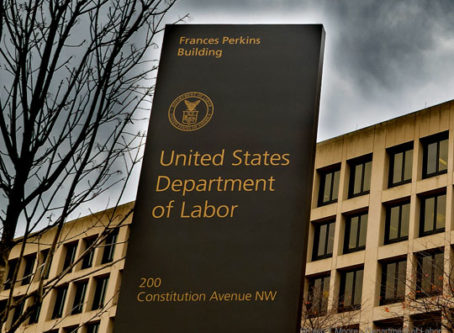A highly potent greenhouse gas, methane makes a significant contribution to climate change, but has historically received relatively little attention in climate mitigation discussions. That is now beginning to change. In addition to investigating new ways to control methane emissions, scientists are also researching the possibility of removing methane already in the atmosphere. Significantly more work is needed to determine whether that is possible and the impacts it might have. Conducting the necessary research, and moving ahead with deployment (if that’s ultimately deemed appropriate), could raise a host of legal issues. Those issues are explored in a new report by researchers at the Sabin Center, Removing Methane via Atmospheric Oxidation Enhancement: The Legal Landscape. The report analyzes the international and U.S. laws governing methane removal via atmospheric oxidation enhancement (AOE). Subsequent reports will focus on other atmosphere methane removal approaches.
AOE is still in very early stages of development, and significantly more research is required to fully evaluate its efficacy and impacts (both positive and negative). But legal considerations could have a major bearing on whether, when, where, and how AOE research and any subsequent deployment can take place. The Sabin Center’s new paper maps and analyzes the applicable legal frameworks, both at the international level and domestically in the U.S.
This blog post outlines the climate impact of atmospheric methane, discusses the promise of AOE as a technique for reducing atmospheric methane, and describes the Sabin Center’s new report assessing the legal landscape governing AOE projects in the United States.
Why is Atmospheric Methane Removal Important?
In order to achieve the Paris Agreement’s temperature goals, global greenhouse gas (GHG) emissions must reach net-zero in the second half of this century and potentially go net negative shortly thereafter. The global community is not currently on track to achieve that goal. This, together with the increasingly visible impacts of climate change, has prompted growing interest in removing GHGs directly from the atmosphere. While GHG removal cannot substitute for rapid and deep emissions cuts, it could help to offset residual emissions from hard-to-abate sectors and potentially deliver net negative emissions later in the century.
To date, efforts to advance GHG removal have primarily focused on developing carbon dioxide removal (CDR) techniques, but another GHG removal approach—atmospheric methane removal (AMR)—is now also beginning to receive attention. Removing methane from the atmosphere could bring significant climate benefits. Compared to carbon dioxide, methane is emitted in smaller quantities, and has a shorter atmospheric life, but methane has a much higher global warming potential. On a pound-for-pound basis, methane traps 86 times more heat in the Earth’s atmosphere than the same amount of carbon dioxide would in the first 20 years after it is released and 34 times more heat than carbon dioxide over 100 years. As a result, according to the International Energy Agency, methane is responsible for about 30% of the rise of global temperatures since the industrial revolution.
How would Atmospheric Oxidation Enhancement Remove Methane?
One commonly discussed AMR approach is AOE, which aims to enhance natural processes that break down methane in the atmosphere. One of these processes occurs when dust from areas like the Sahara Desert blows over the ocean and mixes with sea spray. This creates hydroxyl and chlorine radicals, which react with atmospheric methane and produce carbon dioxide and water vapor. This process, called “oxidation,” is the primary natural sink for atmospheric methane and drives methane’s relatively limited (compared to carbon dioxide) atmospheric lifetime of approximately 9 years. AOE aims to accelerate the natural methane oxidation process and convert methane into carbon dioxide more quickly. This would significantly reducing the warming impact of methane.
AOE is largely theoretical, and has never been attempted outside of a laboratory. Given the early stage of AOE research, there are many unanswered questions about its efficacy and impacts. Answering those questions will require controlled field trials as well as expanded modeling and laboratory studies.
New Report: Removing Methane via Atmospheric Oxidation Enhancement: The Legal Landscape
The Sabin Center’s new report, Removing Methane via Atmospheric Oxidation Enhancement: The Legal Landscape, explores the laws that would govern AOE research and any future deployments in the United States. The goal of this report is to provide a detailed analysis of the key legal regimes that could control and shape AOE projects.
The report first introduces AOE, explaining how it would be performed, its climate mitigation and other potential benefits, and the risks it presents. It then discusses relevant international law and U.S. law, including relevant international agreements, rules of customary international law, U.S. federal environmental law, and a brief discussion of U.S. state and local law. In annexes, the paper presents and analyzes case studies for two potential AOE delivery mechanisms: land-based near- coastal towers and marine fuel additives. These case studies highlight governance regimes, permitting processes, and legal reporting obligations that would apply to projects conducted in the United States.
Key findings of the report include:
- AOE law is underdeveloped, but already highly complex. There are currently no international or domestic (U.S.) legal frameworks designed specifically for AOE, but many general environmental and other laws might have implications for AOE projects (e.g., because those projects involve activities or have impacts that the laws were intended to regulate). Throughout the report, the authors highlight areas of legal uncertainty and overlapping jurisdiction over AOE deployment.
- AOE projects will likely implicate several international agreements and rules of customary international law. AOE, by its nature, may have impacts that cross national and jurisdictional boundaries, and this report assesses the role of international law in AOE governance.
- Many AOE techniques implicate, and will be governed by, traditional environmental law. As AOE techniques, by design, affect either or both of the atmosphere and the hydrosphere, traditional environmental law will play an important role in governing AOE projects. Applicant U.S. federal, state, and local laws are discussed in the report.
- Different AOE techniques will be governed by significantly different laws. The report explores various legal issues that may arise from different AOE deployment strategies and deployment locations, and assesses deployment methods ranging from land-based dispersal towers to marine fuel additives.







